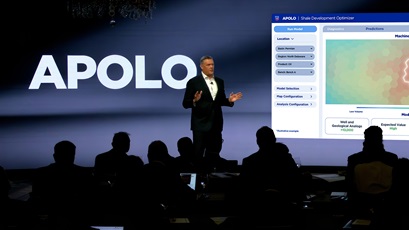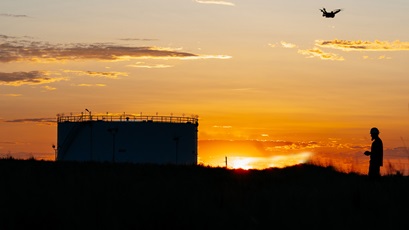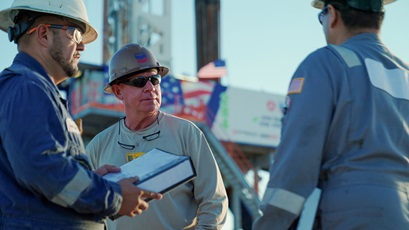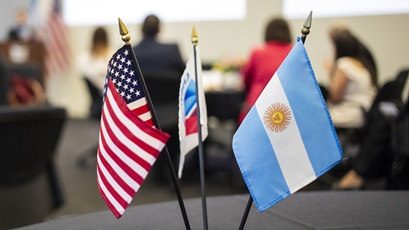our operations
technology and workers unite in Kazakhstan
1 min read | november 16, 2022
Chevron’s employees and contractors teamed up to complete a massive turnaround event in Kazakhstan to inspect and repair equipment.
Earlier this year, more than 3,900 Chevron employees and contractors descended upon a sprawling Kazakhstan oil field with a common purpose: making the region a safer and reliable place to work.
The army of workers was participating in a massive turnaround at Tengizchevroil, a Chevron-led joint venture that encompasses two world-class reservoirs. One, Tengiz, ranks as the world’s deepest producing supergiant oil field and the largest single-trap producing reservoir in existence.
During turnarounds, operations are halted so that equipment can be inspected and repaired. Turnarounds also include enhancements or improvements to equipment. The events take years to plan and are vital to facilitating a safe and effective work environment.
a modern approach
Technology helps us perform turnarounds more efficiently. The scale of our recent Kazakhstan event deployed 160 mobile devices that enabled real-time communication of data to improve decision-making and efficiencies.
paul mccarley
turnaround digital initiatives co-lead
why it matters
Some of the process units inspected are nearly 25 years old, and the team's turnaround efforts are expected to keep this facility running safely and reliably until the next planned turnaround.
Paul McCarley, who helped lead digital initiatives during the turnaround, emphasized the role of technology. “It's very important that we utilize new tools and new technology to shorten the duration of this turnaround.”
safety first
Ensuring employees remain safe—both during the turnaround and once the equipment is returned to service—was the turnaround core team’s top priority over the past two years.
“When we're out there at the worksite, that's the culmination of so much planning and so many meetings,” McCarley said. “We want to make sure that we execute our work safely and return the facility to those who will be using it in the future. Because every day they will be walking out into that facility, trusting that the work we did will keep them safe.”
topics covered
related content
-

 how APOLO helps chevron pinpoint prime drilling locations
how APOLO helps chevron pinpoint prime drilling locationsour operationsnovember 12, 2025
-

 robotics supports more efficient workplace
robotics supports more efficient workplaceour operationsnovember 10, 2025
-

 the people who power the US energy advantage
the people who power the US energy advantageour operationsnovember 06, 2025
-

 a statement from chevron CEO mike wirth on Argentina
a statement from chevron CEO mike wirth on Argentinaour operationsseptember 24, 2025
chevron email updates
Subscribe to our newsletter to receive news and updates.



